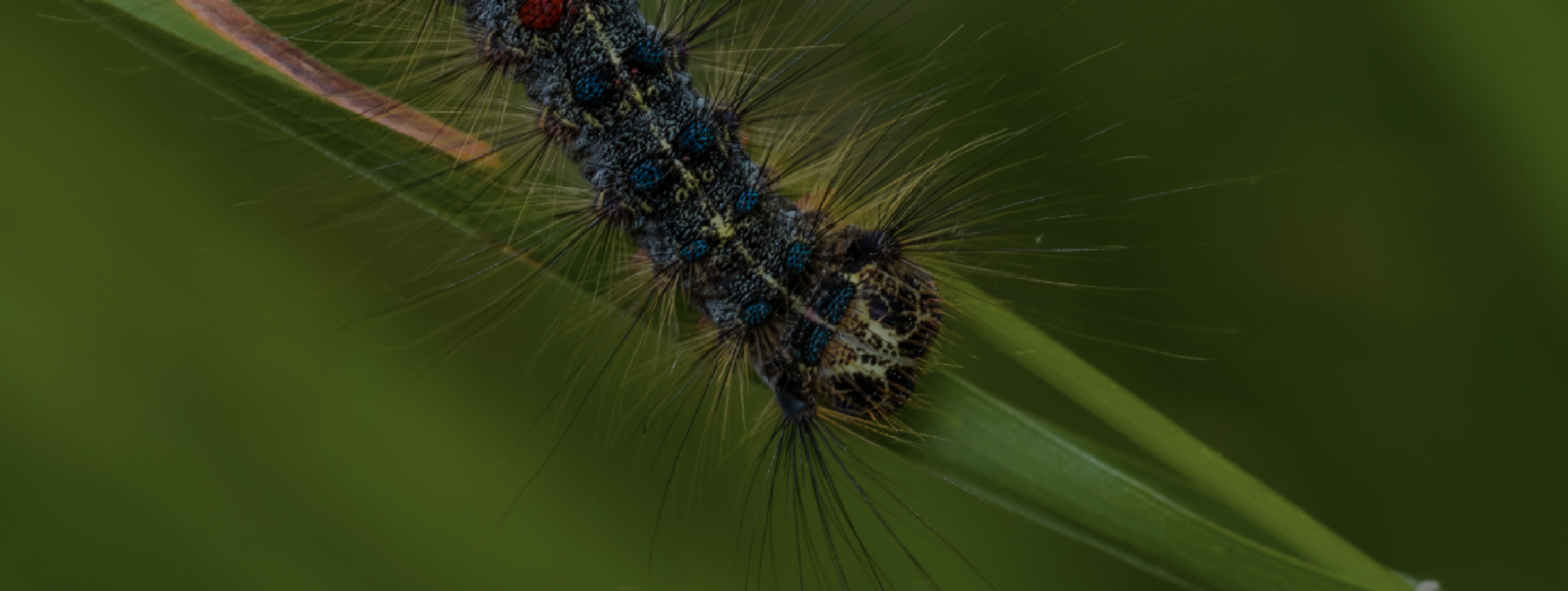
Invasive Species | Forest Pests
Spongy Moth
Spongy Moth
(Lymantria dispar dispar)
French common name: Spongieuse
The Spongy Moth is native to Europe, and has become established throughout New Brunswick, Nova Scotia, PEI, and other Canadian provinces and northeastern United States. Adult moths produce large amounts of eggs that persist through winter and create caterpillars that damage a wide variety of hard and softwood tree species. Many municipalities throughout New Brunswick and Canada are experiencing an increase in the impacts of Spongy moth as their population experiences a boom.
Characteristics
Spongy Moth eggs: Eggs appear as a tan/yellow colour fuzzy mass, approximately 2-4 cm across that female moths lay on tree bark and other outdoor items like furniture and equipment.
Spongy Moth females lay between 500-1000 eggs in tree bark crevices in mid to late summer, and eggs hatch the following spring (April)
Spongy Moth caterpillar: The larval form of Spongy moth is a dark coloured caterpillar, approximately 6 cm in length, that is covered in spikey hairs and pairs of red and blue dots that run down their back.
Caterpillars pupate in a dark brown, kidney shaped hard shell that hangs from tree bark and other hard surfaces.
Spongy Moth adults: Winged moths that appear in mid-summer (June-July), males are a tan/brown colour, with feathered antennae and wings capable of flight while females are a lighter beige/white colour and cannot fly.
Didier Descouens
Key ID Features
Didier Descouens
Red and blue spots on back
Jerzy Strzelecki
Feathered antennae on male moth (Left)
Ilia Ustyantsev
Female Spongy Moth showing light colours
Common Look-a-Likes
William M. Ciesla, Forest Health Management International, bugwood.org
Eastern Tent Caterpillar (Malacosoma americanum)
Full black head
Absence of blue and red paired spots
Andy Reago, Chrissy McClarren
Forest Tent Caterpillar (Malacosoma disstria)
Feathered antennae
Lighter colours than the typical Spongy Moth







